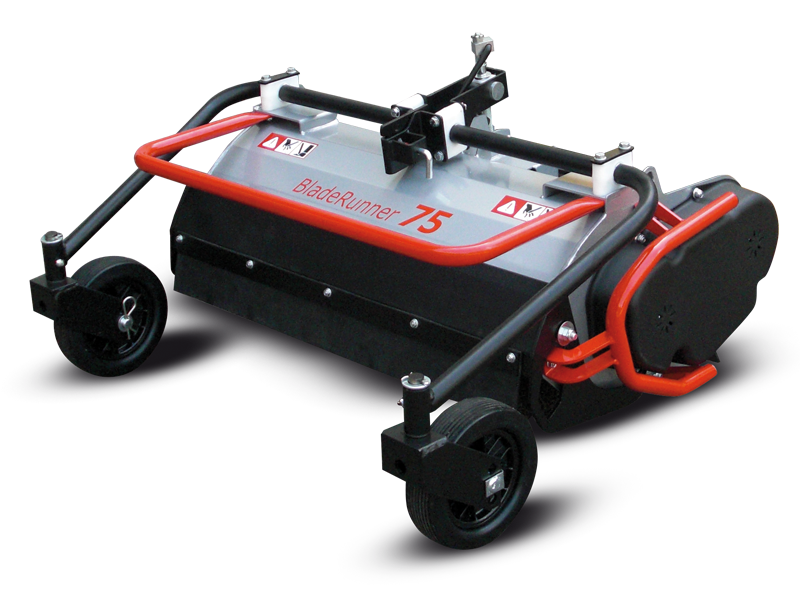Comparing heavy duty mowers
Features and differences between RollerBlade and BladeRunner
RollerBlade and BladeRunner are both professional heavy duty mowers for BCS motor mowers and two-wheel tractors with many components in common, such as: the blade rotor, the gear transmission with PTO brake and anti-drag freewheel, the PTO flange, etc.
The cutting of brambles, shrubs, scrub, pruning residue, etc. is entrusted to movable Y-blades fitted on a horizontal rotor for an almost total cutting overlap.
However, RollerBlade and BladeRunner have some significant differences:
1. Versions
RollerBlade is available in 2 versions: with 75 and 90 cm working widths.
BladeRunner is available in 4 versions: with 60, 75, 90 and 110 cm working widths.
2. Weight of the blades
The blades of RollerBlade weigh 60% more than those of BladeRunner and allow for even more heavy-duty work.
3. Aesthetics
The RollerBlade casing has a different shape from that of BladeRunner to make it more effective: in fact, the right side is completely free from obstructions, thereby allowing you to work near walls and obstacles.
4. The front opening
The front ‘inlet’ of RollerBlade is fixed, prominently forward and with movable protective blades. That of BladeRunner, on the other hand, is mobile, close-fitted, with a protective cover and bar.
5. Dimensions and weight
With the same working width, RollerBlade is more compact than BladeRunner.
For example, in the 90 cm working version, RollerBlade has a footprint of 105 cm wide (compared to 113 cm of BladeRunner) and 75 cm deep (compared to 91 cm of BladeRunner).
BladeRunner is lighter though: 94 kg vs 106 kg.
6. Roller vs wheels
RollerBlade rests on an anti-scalp roller.
As standard, BladeRunner is fitted with pivoting front wheels, whereas the anti-scalp roller is available as an option and allows you to work on harsh terrain, on slopes and with the presence of bushes without any wheels that can be raised and excluded.
7. Cutting width
The cutting height of both RollerBlade and BladeRunner is continuously adjustable by means of a crank.
The crank in RollerBlade acts on the roller and adjusts the cutting height to a minimum of 1 cm.
The crank in BladeRunner acts on the wheels and adjusts the cutting height to a minimum of 2 cm. It can decrease to 1 cm by excluding the front wheels and fitting the anti-scalp roller.
8. Use
RollerBlade is more stable on slopes but more difficult to steer. For this reason it is easier to use on a single-axle fitted with steering clutches. It was primarily designed to cope with heavy-duty work on rustic terrain and shredding shrub and woody stems.
BladeRunner is easier to handle thanks to the front wheels and is ideal on level ground or on moderate slopes. It is more versatile when mowing weeds on terrain that is already cultivated.
Conclusions
RollerBlade is extremely effective as heavy-duty equipment on rustic terrain that has not been previously tilled. The heavier blades make a ‘clean sweep’ and chop shrubs and woody stems with no hesitation.
Thanks to a lower casing design, it is also useful for garden caretakers as it can work under plants and close to bushes. Furthermore, thanks to the anti-scalp roller, it is preferred for cutting grass on raised beds bordered by curbs.
BladeRunner is the best choice for all types of mowing and shredding of weeds and scrub on already cultivated terrain. The large front opening allows you to mow even tall and dense material.
The front wheels make the tool more manoeuvrable and can be used on most BCS motor mowers and two-wheel tractors. The smaller version, with a working width of 60 cm, also allows it to be used on machinery with only 7 hp.




